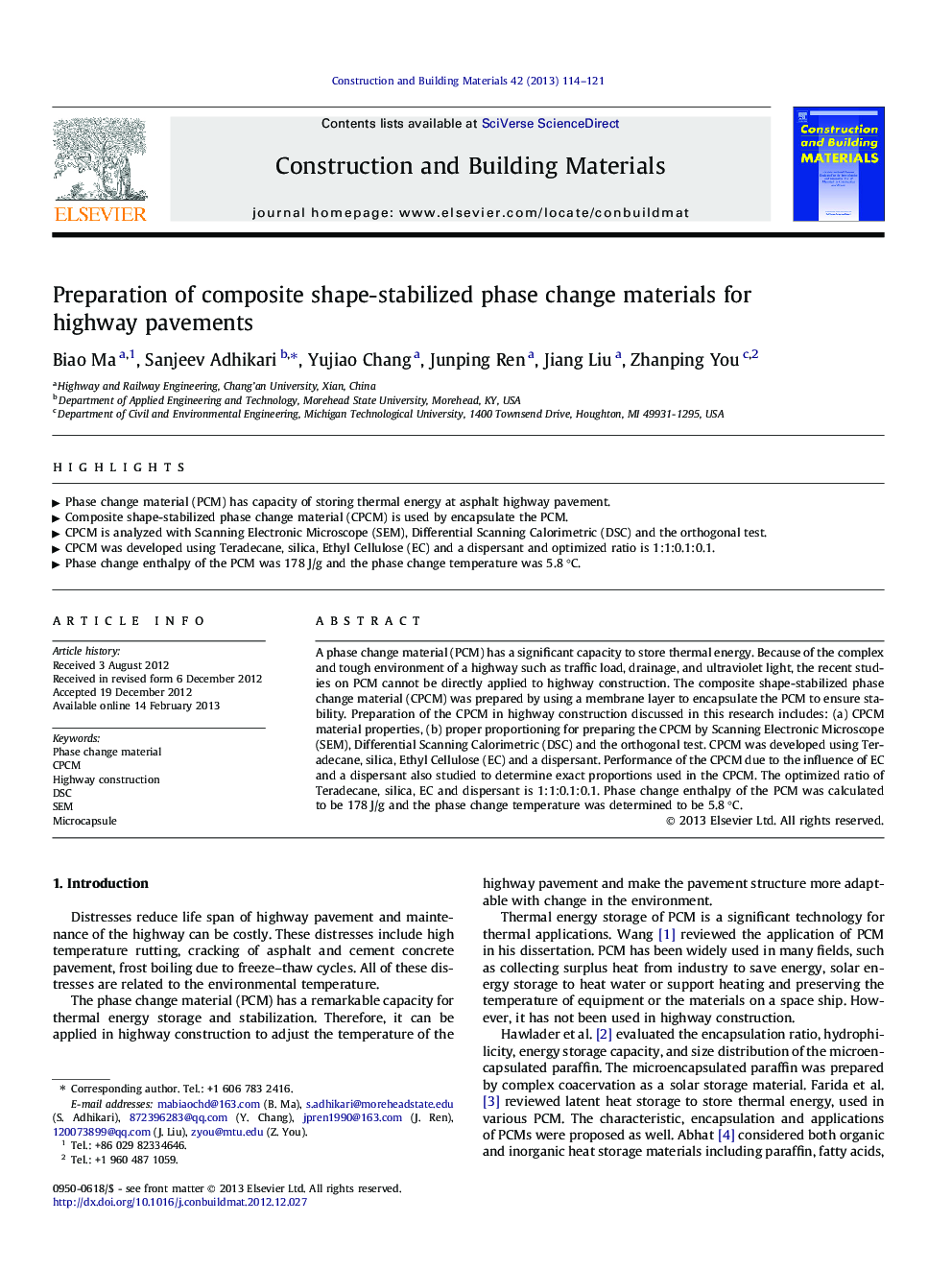| Article ID | Journal | Published Year | Pages | File Type |
|---|---|---|---|---|
| 258348 | Construction and Building Materials | 2013 | 8 Pages |
A phase change material (PCM) has a significant capacity to store thermal energy. Because of the complex and tough environment of a highway such as traffic load, drainage, and ultraviolet light, the recent studies on PCM cannot be directly applied to highway construction. The composite shape-stabilized phase change material (CPCM) was prepared by using a membrane layer to encapsulate the PCM to ensure stability. Preparation of the CPCM in highway construction discussed in this research includes: (a) CPCM material properties, (b) proper proportioning for preparing the CPCM by Scanning Electronic Microscope (SEM), Differential Scanning Calorimetric (DSC) and the orthogonal test. CPCM was developed using Teradecane, silica, Ethyl Cellulose (EC) and a dispersant. Performance of the CPCM due to the influence of EC and a dispersant also studied to determine exact proportions used in the CPCM. The optimized ratio of Teradecane, silica, EC and dispersant is 1:1:0.1:0.1. Phase change enthalpy of the PCM was calculated to be 178 J/g and the phase change temperature was determined to be 5.8 °C.
► Phase change material (PCM) has capacity of storing thermal energy at asphalt highway pavement. ► Composite shape-stabilized phase change material (CPCM) is used by encapsulate the PCM. ► CPCM is analyzed with Scanning Electronic Microscope (SEM), Differential Scanning Calorimetric (DSC) and the orthogonal test. ► CPCM was developed using Teradecane, silica, Ethyl Cellulose (EC) and a dispersant and optimized ratio is 1:1:0.1:0.1. ► Phase change enthalpy of the PCM was 178 J/g and the phase change temperature was 5.8 °C.
